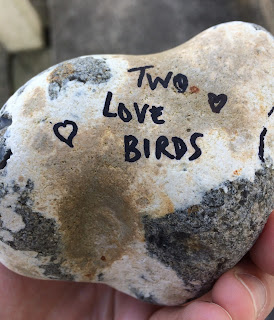On a recent holiday in Cromer my brother and I left stones that we had
decorated on benches near the sea front for other holidaymakers to find.
This is something I first did a few years ago after
walking along the beach and finding unusual stones that looked like faces and
animals.
Why don't you have a go next time you are at a seaside
resort that has a pebbly beach? Arm yourself with some Sharpies to add
character to the stones and then plant them where people will find them.
Return to the locations later to see if the stones have
been picked up.
On this latest occasion a large stone cat managed to make its way from a seat overlooking the Rocket Cafe to a bench
further up the coastal path! I wonder... did it walk there itself?





























